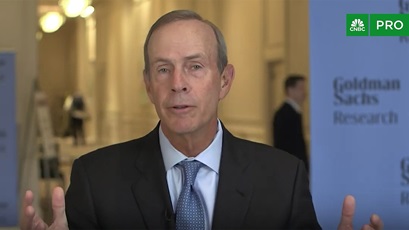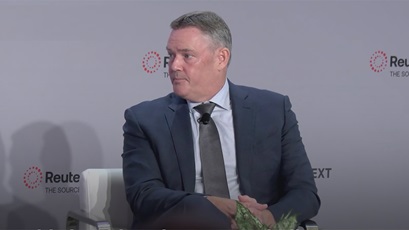emissions solutions
lower carbon gas turbine first to hit major milestone
2 min read | september 04, 2024
A pilot project is demonstrating that certain stationary power turbines can run on a high-hydrogen fuel blend, helping to lower carbon emissions.
In May, a SoLoNOx gas turbine in California was the first to produce energy for multiple days using a fuel blend with 60% hydrogen. A SoLoNOx gas turbine is a type of turbine that produces lower nitrogen oxides (NOx) emissions.
“The project has shown that this type of lower-emissions stationary power generation is possible 24/7 with a high-hydrogen blend. That’s a first,” said Troy Haugeberg, Chevron’s project manager for this demonstration. “Reliable stationary power generation is crucial for industrial applications like manufacturing and data centers. Seeing that this type of hydrogen infrastructure and technology work over longer periods can encourage their adoption by hard-to-abate industries.”
what it means
Low-NOx turbines use special technology to reduce NOx emissions caused by burning natural gas at high temperatures to generate power. While turbines traditionally run on natural gas, blending natural gas with hydrogen can reduce CO2 emissions.
This specially equipped turbine is located at a Chevron Pipeline & Power Business Unit facility in Kern County, California. It generates power and steam used at the oil field surrounding the plant site.
The milestone was reached through collaboration with Solar Turbines, a subsidiary of Caterpillar.
“Solar Turbines is committed to supporting Chevron’s efforts to reduce greenhouse gas emissions to help meet climate-related goals,” said Aad den Elzen, vice president of power generation and strategic growth for Solar Turbines. “While Solar’s traditional turbine configurations have significant experience running on high-hydrogen blends, running 60% on an existing low-NOx turbine is an important development.”
why it matters
Chevron is working to lower the carbon intensity of its operations. This milestone is a major step in that direction.
“It’s exciting for our customers and for us,” said Elizabeth Vose, commercial advisor for Chevron’s U.S. West Coast hydrogen group. “This demonstration provides an opportunity to share our knowledge and help our customers meet their lower carbon goals.”

Part of the facility where a high-hydrogen fuel blend is being tested on a special lower-emissions turbine.
what’s next
The next crucial step in the pilot is to demonstrate that the high-hydrogen blend can reliably power the turbine around the clock for 180 days.
This longer run time can give an accurate picture of how the turbine could perform under sustained use and across seasonal temperature ranges.
Chevron is testing fuel blends made with at least 55% hydrogen. The several-months-long intermittent demonstration will involve balancing hydrogen concentration with reliable performance.
“Reliably running a low-NOx turbine on 100% hydrogen will require technology development and modifications to the turbine combustion system and will likely be possible in the not-so-distant future,” said Rob Hiestand, a gas turbine optimization engineer for Chevron.
“In the future, companies will want to reduce greenhouse gas emissions using hydrogen, and with the long life and reliability they have come to expect with gas turbines,” he said. “So having Solar Turbines evaluate the unit’s condition and incorporate that data into Solar’s design are essential parts of the groundwork for the long-term run.”
topics covered
related content
-

 biodiesel helps cities lower emissions
biodiesel helps cities lower emissionsemissions solutionsfebruary 04, 2025
-

 chevron CEO discusses the future of energy
chevron CEO discusses the future of energyemissions solutionsjanuary 20, 2025
-

 novel ideas, established companies key to advancing lower carbon tech
novel ideas, established companies key to advancing lower carbon techemissions solutionsjanuary 14, 2025
-

 chevron CEO talks growing production, efficient spending
chevron CEO talks growing production, efficient spendingemissions solutionsdecember 18, 2024
chevron email updates
Subscribe to our newsletter to receive news and updates.



